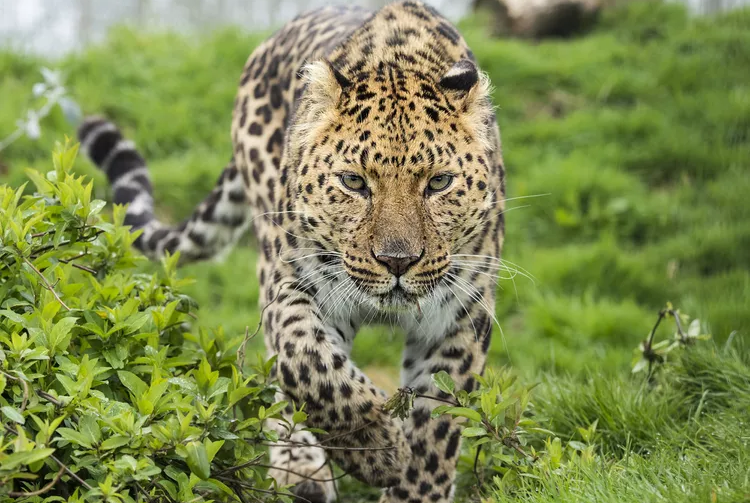Introduction
Cat whiskers are one of the most fascinating features of our feline friends. Those long, stiff hairs sprouting from their muzzle aren’t just cute—they serve important sensory and communication roles. While many cat owners notice whiskers, fewer understand how essential they are to a cat’s survival, behavior, and even personality.
If you thought whiskers were just fancy facial hair, think again. Here are 10 surprising facts about cat whiskers that reveal how incredible and complex these structures truly are.
1. Whiskers Are Highly Sensitive Touch Organs
Cat whiskers, also called vibrissae, are deeply embedded in the skin and connected to a rich supply of nerves. This makes them highly sensitive tactile sensors that detect the slightest touch or air movement.
Each whisker follicle is surrounded by muscles and nerve endings, turning whiskers into precise environmental detectors. They help cats measure objects, feel nearby movements, and navigate tight spaces—even in total darkness.
2. Cats Use Whiskers to “See” Their Surroundings
Even though cats have excellent night vision, whiskers provide an additional way to sense their surroundings. When a cat moves through narrow areas or hunts in the dark, the whiskers act like biological radar.
If their whiskers brush against an object, cats know exactly how close they are to it. This helps them avoid getting stuck or injured. Whiskers can detect tiny changes in air currents caused by nearby prey, aiding in hunting.
3. Whiskers Are as Wide as a Cat’s Body
One fun fact is that a cat’s whiskers roughly correspond to the width of their body. This means whiskers act as a natural measuring tool to judge if a cat can fit through a narrow gap.
If their whiskers won’t fit, chances are their body won’t either. This is why cats sometimes hesitate before squeezing under doors or into boxes—they’re “testing” the space with their whiskers first.
4. Cats Have Whiskers All Over Their Bodies
While the whiskers on a cat’s muzzle are the most noticeable, they also have vibrissae in other areas, including:
- Above the eyes (superciliary whiskers)
- On the cheeks
- On the chin
- Even on the backs of their front legs
These extra whiskers help cats detect obstacles, protect their eyes, and maintain balance while moving.
5. Whiskers Change Length Based on a Cat’s Mood and Environment
Cat whiskers are dynamic and can shift position or length subtly depending on how a cat feels or what it’s doing. When a cat is curious or hunting, the whiskers tend to fan forward to gather more sensory information.
When a cat is frightened or defensive, the whiskers often flatten backward against the face. Observing whisker positions is a useful way to read a cat’s mood.
6. Cutting a Cat’s Whiskers Can Be Dangerous
One of the most important rules for cat owners is to never trim or cut a cat’s whiskers. Whiskers are essential tools for spatial awareness, and damaging them can cause confusion, stress, and loss of balance.
Cats without functional whiskers may have trouble navigating their environment, bump into objects, or become fearful. Always leave whiskers intact and consult a vet if you notice unusual whisker loss.
7. Whiskers Help Cats Hunt With Incredible Precision
Whiskers are vital hunting tools. When a cat captures prey, its whiskers help detect the exact position of the prey’s body and even its breathing movements.
This allows cats to deliver a precise bite, minimizing injury to themselves and ensuring a quick kill. Whiskers also help cats sense struggling prey in the dark or under dense foliage.
8. Whiskers Are Regularly Shed and Regrown
Like fur, cat whiskers have a growth cycle. They naturally fall out and regrow over time. Losing a whisker is normal, but losing many whiskers at once can signal health issues.
Regrowth ensures whiskers maintain their sensitivity and function. Owners should monitor for excessive whisker loss and consult a vet if they notice bald patches or other symptoms.
9. Whiskers Can Reveal a Cat’s Personality
Believe it or not, whisker behavior can hint at a cat’s temperament. Studies and observations suggest:
- Cats with forward-facing whiskers are often more curious and playful.
- Cats with whiskers flattened backward may be anxious or defensive.
- Whisker position can even reflect excitement or relaxation levels.
Learning to read whisker cues can enhance communication and bonding with your feline friend.
10. Some Cats Have Extra or Double Whiskers
While most cats have about 24 whiskers (12 on each side), some cats are born with extra whiskers or double rows of vibrissae. This trait is sometimes called “whisker hyperplasia.”
Extra whiskers don’t harm the cat and may even provide heightened sensory input. Breeders sometimes select for this trait in certain fancy or rare cat breeds.
Conclusion
Cat whiskers are far more than decorative facial features. These remarkable sensory hairs help cats explore the world, hunt, communicate, and stay safe. Understanding their function helps cat owners appreciate just how finely tuned and complex our feline companions really are.
Next time your cat’s whiskers twitch or flare, take a moment to watch and learn—it’s your cat’s way of reading the world and sharing its feelings. Treat their whiskers with respect, and you’ll deepen your bond with these incredible animals.






Leave a Reply